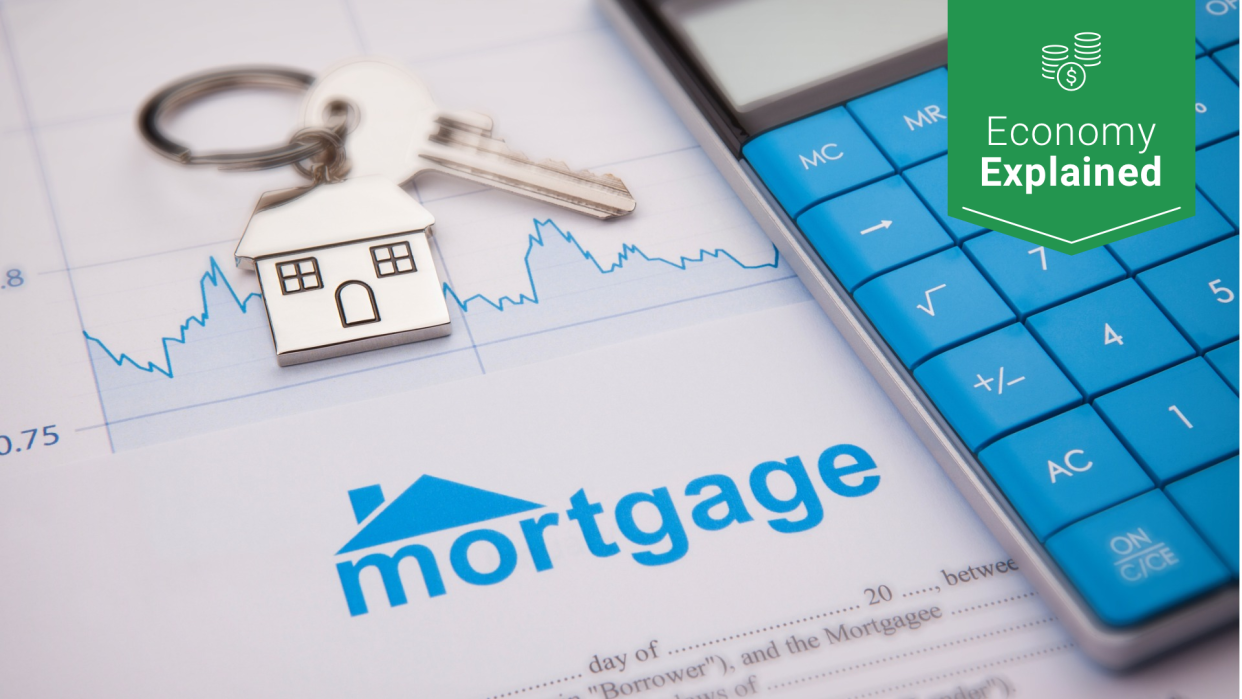Adjustable-Rate vs. Fixed-Rate Mortgage: How They Can Impact Your Finances

There are all kinds of mortgages for all kinds of borrowers — FHA loans, VA loans, jumbo loans and the list goes on. No matter the mortgage program, the interest you pay will be structured in one of two ways. With fixed-rate mortgages, the rate remains the same throughout the entire life of the loan. Adjustable-rate mortgages (ARMs) are just the opposite. They fluctuate up and down over time with the going market rate.
The Economy and Your Money: All You Need To Know
Helpful: Understanding How APR, APY and Interest Rates Work and Impact Your Finances
Fixed-Rate Mortgages Are Simple and Stable
There are a few reasons why most mortgages are financed through fixed-rate loans. The biggest draw of all is that they give the gift of predictable monthly housing costs, which takes so much of the pain out of long-term budgeting. Most people choose this kind of mortgage because it offers:
Predictability: If you have a fixed-rate loan, you’re immune to interest-rate swings and therefore to unexpected changes in your monthly mortgage payments.
Simplicity: Fixed-rate loans are easy to understand and they’re more or less the same no matter the lender.
Control: Fixed-rate loans let borrowers choose the lower monthly payments that come with 30-year loans or instead opt for bigger monthly payments with less interest through a shorter 15- or 20-year loan.
See: How Interest Rates Affect Your Wallet and the Bigger Economic Picture
Find Out: What To Expect From an Economic Boom
But They Cost More and Let You Buy Less
If you want the simplicity, ease and predictability that fixed-rate loans provide, you’ll have to be willing to make some tradeoffs, including:
Higher rates: Stability comes at a cost — lenders charge more for fixed-rate mortgages. If you lock in when rates are high, they stay high even if market interest rates drop.
Less buying power: When interest rates are high, borrowers with fixed-rate mortgages can’t afford as much house as they might be able to with an ARM.
More Economy Explained: What Is Inflation and What Does It Mean When It Goes Up or Down?
ARMs Are Cheaper — In the Beginning
Adjustable-rate mortgages aren’t as common as fixed-rate loans — and they’re certainly not for every borrower — but they do offer several advantages, including:
Lower rates: Initially, the interest on an ARM is locked in below the market rate for a period of one, five, seven or 10 years. The low initial rate is also called the “teaser rate.”
More buying power: Lower interest rates mean that ARM borrowers can afford bigger loans.
Find Out: Understanding the Differences Between Inflation, Deflation & Stagflation
But They’re Complicated — and They Can Get Expensive Fast
The teaser rate is fleeting, and unlike set-and-forget fixed-rate loans, taking your eye off an ARM can lead to big financial trouble.
Rates change over time: Adjustable-rate loans start with low rates that are fixed for a set period of time, but they adjust — hence the name — to a higher rate and continue to adjust on a predetermined schedule. The more frequent the adjustment, the lower the initial rate.
Your payments can be unpredictable: With each adjustment, your payment can change based on the market rates at the time, which are impossible to predict when the loan is signed. Although adjustments could bring lower rates, you run the risk of facing much higher monthly payments each time the loan resets.
ARMs are complex and hard to keep up with: To avoid trouble with an ARM, you have to understand how the adjustment frequency of your loan impacts your rate and which adjustment indexes your rates are tied to, like CDs or Treasury bills. You also have to know your margin rate, which is the rate you pay above the adjustment index. The ceiling represents the highest your rate can rise and caps are limits on how much they can increase per adjustment — and there are other variables, as well.
Helpful: How To Calculate Your Debt-to-Income Ratio
ARMs can be a double-edged sword. Their lower upfront rates allow borrowers to secure bigger loans. But if rates rise, borrowers can into trouble fast if the loan stretched their budgets in the first place. ARMs can make sense for borrowers who plan to be in homes only for a short while. If played right, you can save a lot of money with an ARM if you sell before the teaser rate expires — but that success depends on future market conditions. With a fixed-rate loan, you know what’s coming for decades down the line no matter what happens — but you’ll pay a little more for that peace of mind.
More From GOBankingRates
Last updated: Sept. 7, 2021
This article originally appeared on GOBankingRates.com: Adjustable-Rate vs. Fixed-Rate Mortgage: How They Can Impact Your Finances
